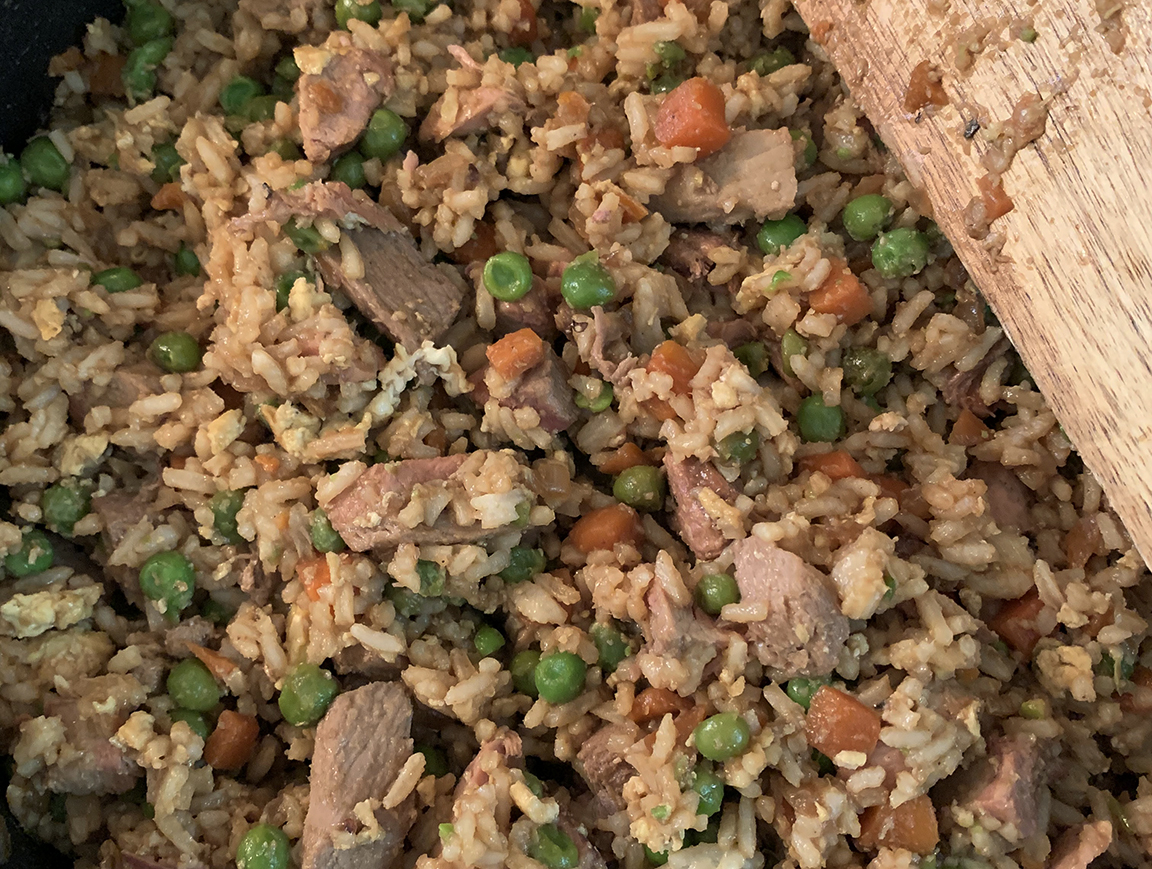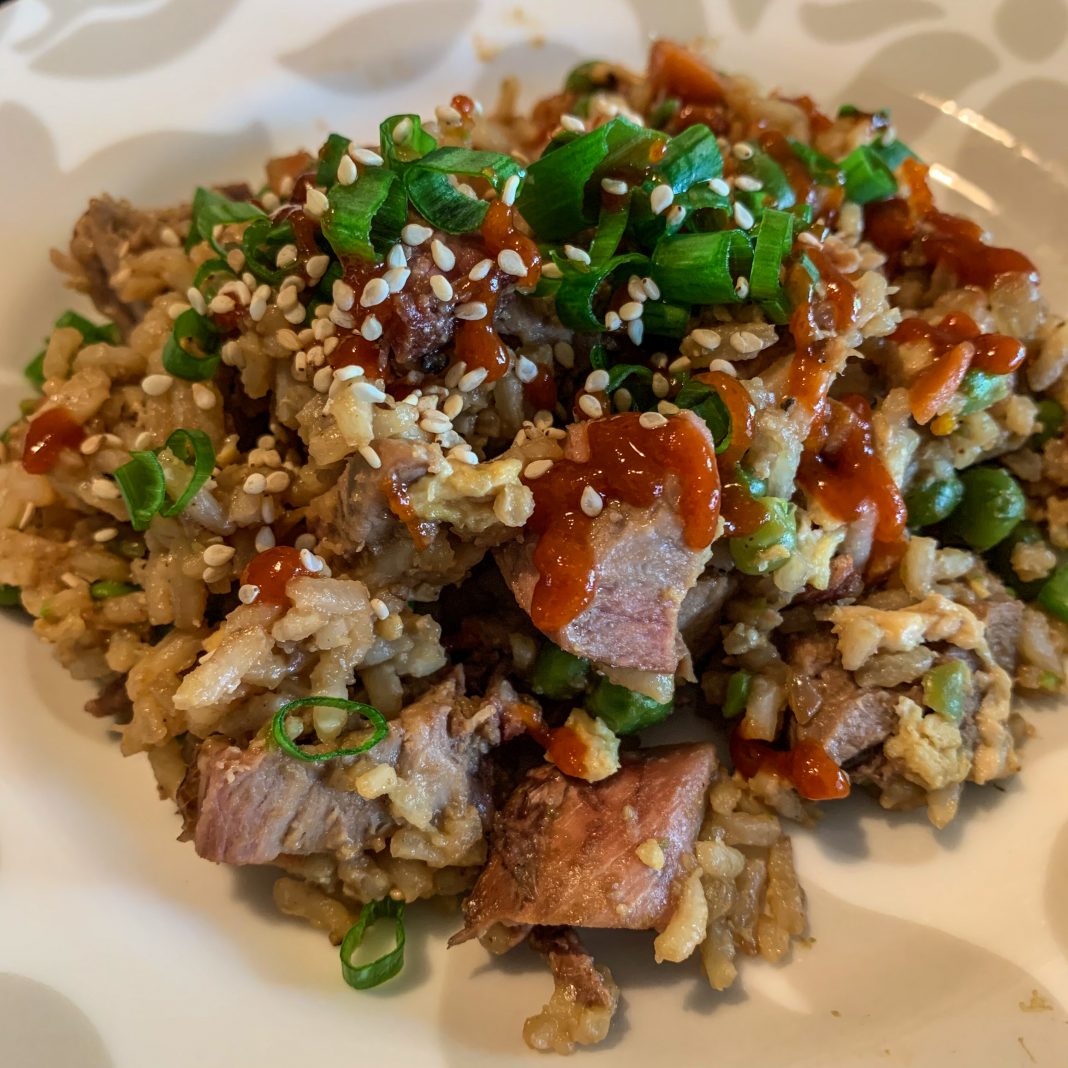It’s a swine time to be a feral hog in the Lone Star State.
According to the Texas Parks and Wildlife Department, the invasive animals prone to causing huge destruction to native habitat and crops can now be found in 253 of Texas’ 254 counties.
Here’s a quick piece of trivia: What county have the critters not been documented in — yet?
If you said El Paso County without looking at the map below, you are correct! However, that literature and sourcing is “as of 2019.” For all biologists know, we may have a 100% pig situation across the board, and if you know just how prolific these critters are, that’s where I’d put my money.
Simply put, we Texans have a huge pig problem — and there’s literally nothing we can do about it — as wild swine (classified as feral pigs, Eurasian wild boar and hybrid populations resulting from cross-breeding of Eurasian wild boar and feral pigs) are the country’s most abundant free-ranging introduced ungulate (a fancy word for animals that have hooves).
The overall U.S. wild pig figure is estimated to have grown exponentially in the past four decades. From 1982 to 2016, the number in the United States increased from 2.4 million to an estimated 6.9 million, with 2.6 million estimated to be residing in Texas alone, according to TPWD. Again, note that that figure in the Lone Star State is higher simply because “pigs have the highest reproductive rate of any ungulate.”
While pigs naturally are inclined to increase their numbers, human introduction of pigs to native habitats for hunting purposes also has been a large driver in propping up a burgeoning swine number.
Wild pigs in Texas and elsewhere will eat anything and everything they can find, forage or flay, and studies have documented “intentional predation of various vertebrate including juvenile domestic livestock, white-tailed deer fawns, ground-nesting bird nests and various species of reptiles and amphibians,” according to TPWD.
And, in all reality, there is only one real predator efficient at taking down scores of wild hogs: You, me and anyone else with firepower and time on their hands. TPWD does note that in places where alligators, mountain lions and black bears exist in Texas, some of these apex predators will snipe some hogs intentionally. However, it’s rare, and those meals don’t put any kind of dent in the local or statewide swine figure. And, if you know about basic habitat needs of those somewhat hog-killing machines, you quickly realize they aren’t going to do much damage to wild pigs.
In terms of habitat and agricultural damage, feral hogs are proficient at ruining anything and everything they can find. In 2007, researchers estimated that “each wild pig carried an associated (damage plus control) cost of $300 per year, and at an estimated 5 million wild pigs in the population at the time, Americans spent over $1.5 billion annually in damages and control costs. Assuming that the cost-per-wild pig estimate has remained constant, the annual costs associated with wild pigs in the United States are likely closer to $2.1 billion today,” TPWD notes.
A 2006 publication reported that wild pigs caused approximately $52 million in agricultural damage annually but more recent studies published in 2016 and 2019 estimate that the annual loss to agriculture in Texas is approximately $118.8 million, again according to TPWD.
Another negative aspect of the expanding pig problem here in Texas is akin to the prevalence of our native white-tailed deer herd that numbers more than 4 million: vehicle collisions. According to TPWD, researchers conservatively estimate damages associated with wild pig-vehicle collisions to be $36 million annually in the United States, and that figure is only going to increase. A family friend who is a priest here in South Texas hit a wild hog while driving at night near Tivoli and though the impact totaled the vehicle and caused it to flip, he came away without serious injury. The same can’t be said for the 200-pound pig that ran into the highway.
As if all these factors add up to enough issues on our native landscape, wild pigs can carry dozens of diseases that can be transmitted to domestic livestock and humans. Among those are brucellosis, leptospirosis, toxoplasmosis and trichinosis.
Now, here’s the part where I explain the silver lining: Wild pigs — even those big “nasty” old boars that get a bad rap — are downright delicious and can be served in so many tasty ways that I’ve lost count.
There’s essentially no wrong way to cook up Texas feral hogs, no matter where you kill them, and this recipe is one of the easiest and tastiest ways — especially if you’ve already got smoked or barbecued wild pig. The extra time and smoke on the pig meat only helps bring out extra flavor. The recipe is also even easier if you’ve got day-old white rice on hand.
And best of all, you can perform this whole dinner offering in a single wok or deep pan (if you’ve already got leftover rice!)
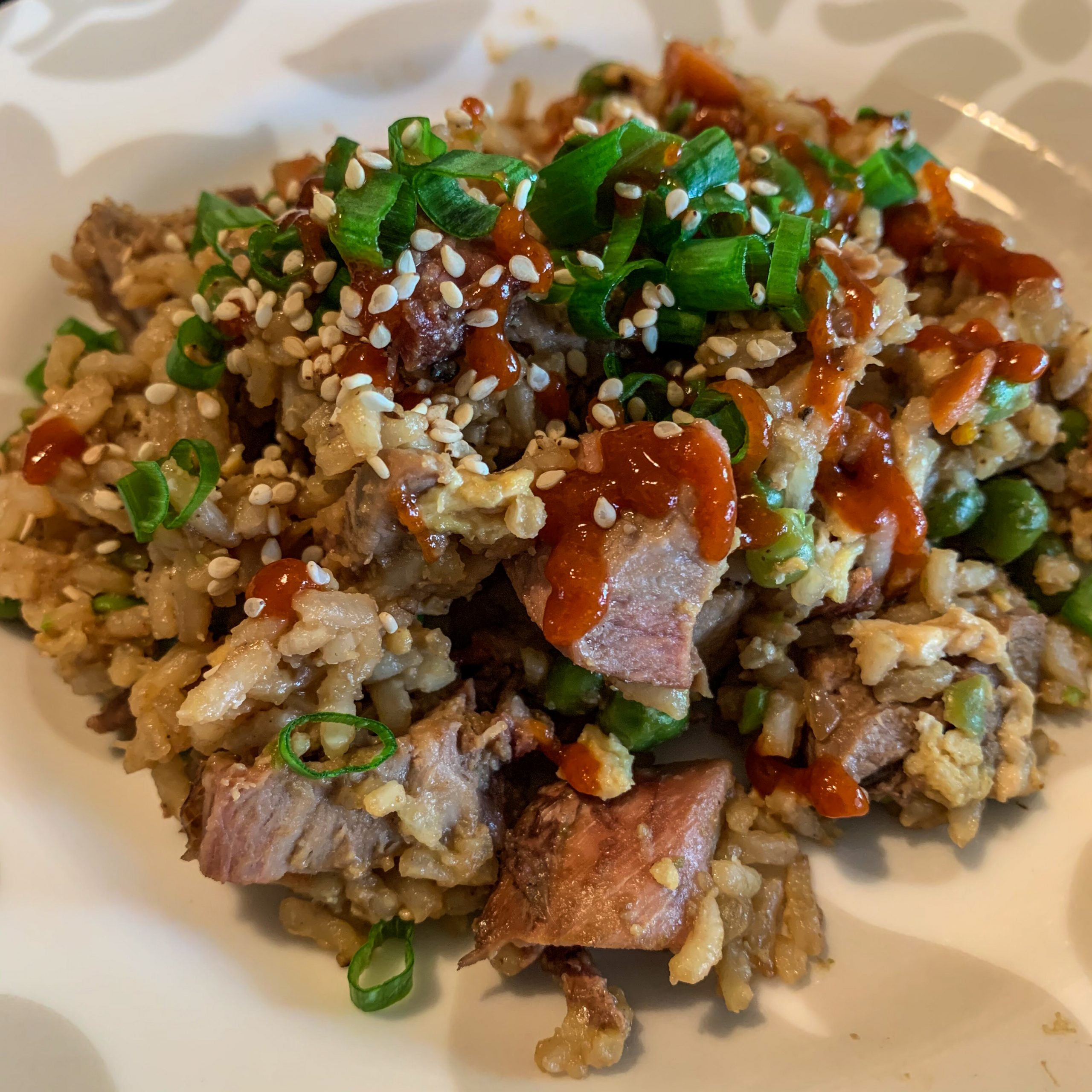
Feral hog fried rice recipe
Ingredient List
1 pound wild pork, cubed from a smoked shoulder or ham
2 cups long-grain white rice (preferably a day or two old)
4 cups water (if making rice fresh)
1 cup mixed frozen peas and carrots
small white onion, finely chopped
1 tablespoon canola oil
2 eggs
soy sauce (low sodium) to taste
sesame oil to taste
chopped green onions for topping
Sriracha sauce for topping
sesame seeds for topping
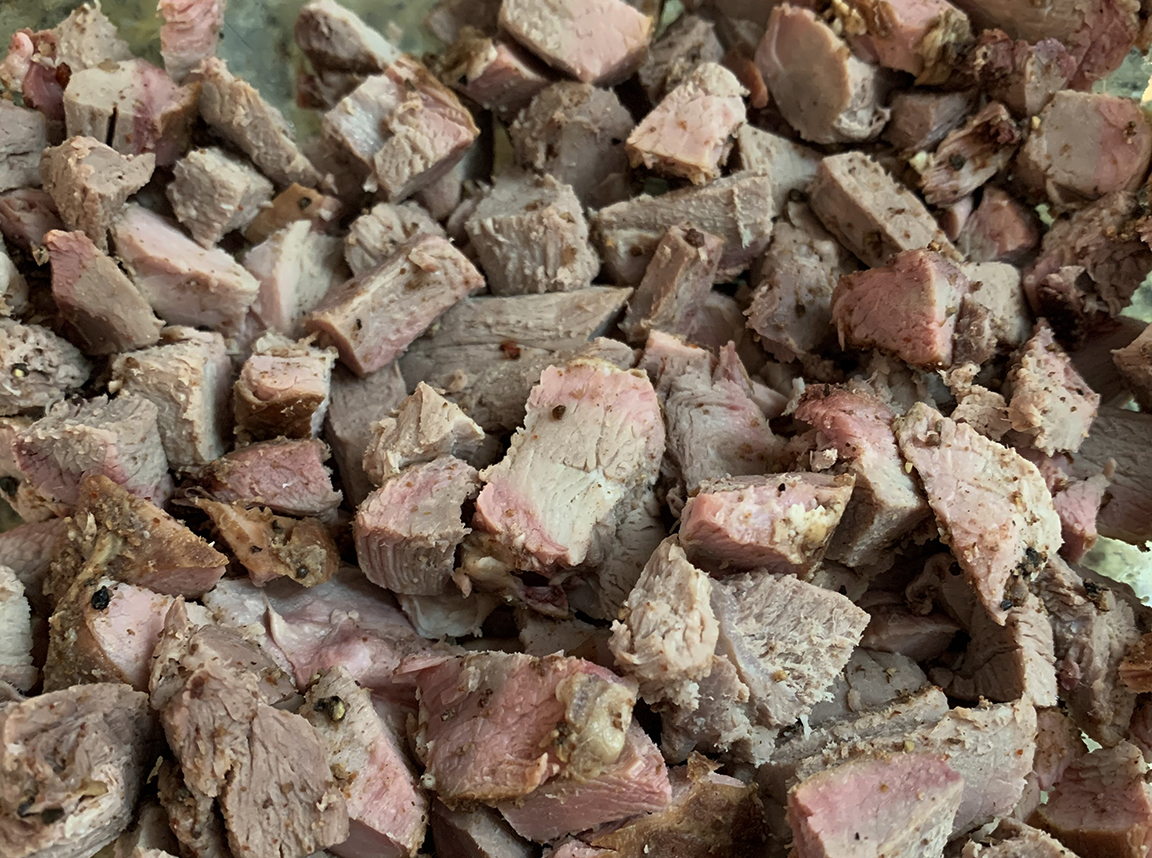
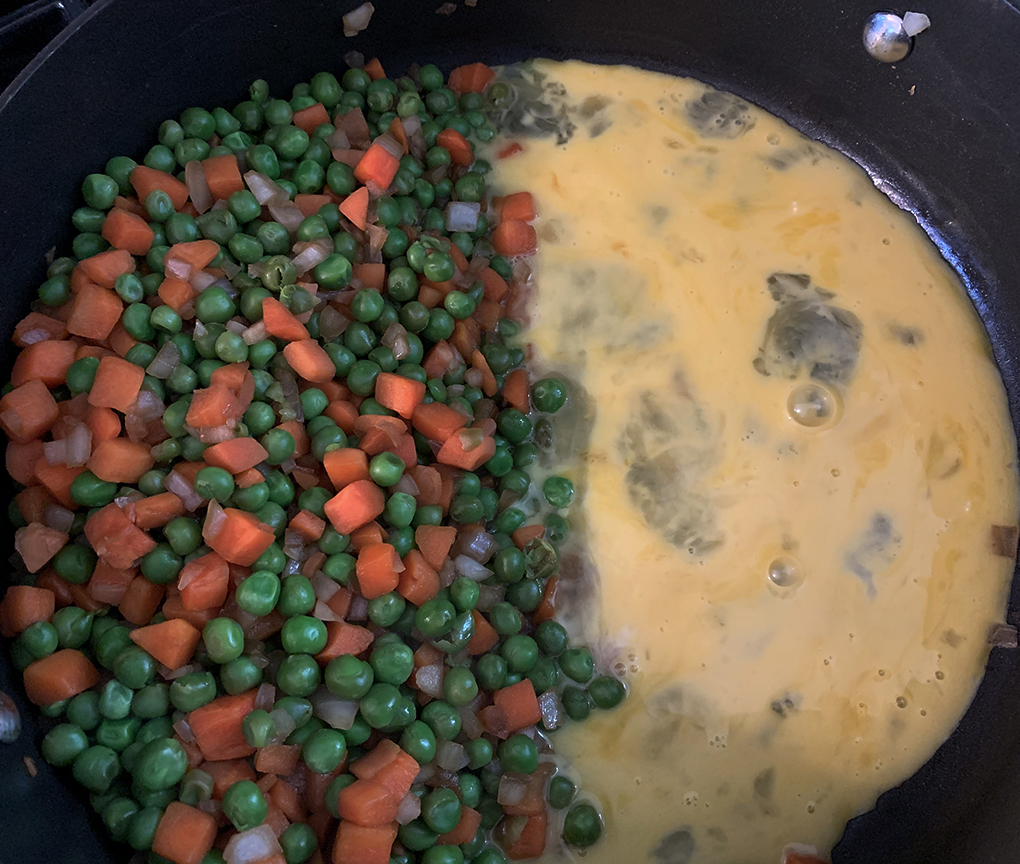
Instructions
- If making rice — bring water to a boil in saucepan, add rice, cover and simmer for 20 minutes. If not making rice, you’re already a step ahead!
- Crack eggs into small bowl and whisk together.
- Heat a wok or deeper pan over high heat and then add onions, peas and carrots. The extra liquid from frozen veggies will help in getting them tender and browning your onions.
- Once tender, move veggies to one side and add oil to the open half.
- Add beaten eggs to open side and stir and cook until slightly scrambled.
- Add in cooked rice, cooking for a few minutes until heated throughout; break up clumps of rice and break up eggs as you mix everything together.
- Add soy sauce and sesame oil, stirring to distribute and continuing to break up any large clumps of rice.
- Once you’re satisfied with the consistency, turn off heat and garnish with scallions.
- Serve up your fried rice piping hot, and if you’re so inclined, drizzle with Sriracha and add more green onions and sesame seeds on top.
